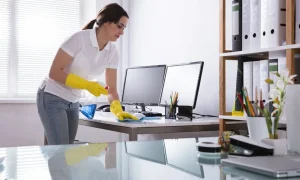Few things are more frustrating at the moment you need them to work than a clogged toilet. It becomes apparent within a day how important a functional bathroom can be. That said, the go-to solution for most people is to immediately flush more, hoping the weight of the water pushes things through. After that doesn’t work or causes an overflow, there’s an immediate switch to the plunger tool, a basic suction instrument to shift movement within the entire pipe via push-pull action. Water doesn’t compress, so in most cases, this works. However, things get complicated when the blockage is solid, such as a toy.
Go Chemicals, Right? No.
The next go-to solution many consumers try is a chemical drain-clearing solution. Draino is probably the most recognizable, but there are others. However, these were designed for the days of metal plumbing. Much of what is used today is PVC drain plumbing. So those chemicals can be pretty harsh on plastic, creating new problems with too many chemical “burns.” And they don’t really work well on stuck solids blocking the drain line.
Don’t be Tricked by a Sudden Clearance
In many cases, a blockage isn’t really cleared with home remedies. Instead, just enough of a gap is made that water can get through, and drainage begins again. The blockage cause may still be very present, waiting to capture enough material again to block the drain line. The only way to truly get at it is to clear the line itself. That involves removing the toilet, accessing the drain pipe itself, and using an extension tool to grab or clear the problem as it moves to the main drain away from the house and a larger pipe. This kind of work isn’t a do-it-yourself job.
A plumber typically has to run a camera down the drain to see positively what the blockage actually is. When confirmed, he or she may then use a snake tool to break down and clear the pipe or a grabber extender to remove the item. In an extreme case, where accessible, the pipe may need to be force flushed or opened up to get at the source. All of these tasks involve the skill of a professional plumber versus a simple homeowner trip to the hardware store.
Focusing on the Real Concern
Aside from the toilet not working, the second big concern is damage to the toilet drain system. Non-professional solutions involving more than just a plunger can damage the drain line itself. When this happens, the wastewater seeps out. If above the foundation, that seepage will smell and contaminate the bathroom. Below the foundation, it will spread through cracks and eventually start to percolate up through the flooring, also causing a horrible smell. Both of these situations are professional-grade repairs, and they are the kinds of things licensed plumbers definitely avoid in their treatment of a clogged drain line.
With a clogged toilet repair services approach, homeowners get the benefit of a service that comes with trained knowledge and experience to know what to avoid, the use of the right tools instead of bodging things to make-do, and backup protection with bonding in the instance that even the plumber involved makes a mistake and triggers house plumbing damage. It’s really the better way to go, as well as getting the bathroom working again in a timely manner.



